If you’re here because you’re wondering how to teach boundaries to dogs, I’m here to commend you!
I know it’s tough. When our dogs start to show their puppy eyes, denying their requests becomes so hard.
But there is power in SAYING NO.
When dog owners say NO, it paves the way for better obedience training, and dogs that are calmer and easier to take care of.

Additionally, dog owners who say NO are less likely to deal with aggressive, restless, stressed, and anxious dogs who don’t listen.
“How is that possible, Dan? Can behavior problems really start because of not saying NO?”
YES.
Giving NO to your dog equals you showing your leadership and boundaries.
And setting those two in place can make a BIG difference to your training and relationship with your dogs.
Read on to learn how to teach boundaries to dogs and why NO is one of your most powerful dog training tools.
Key Takeaways:
- A dog that gets YES all the time will start to think that they’re in charge. And when they think they’re the leader, behavior problems such as barking, aggression, and disobedience come up.
- Saying NO does not need to come with a heavy, angry energy. Using a calm energy while saying NO can communicate that your answer still comes from a place of love.
- You need to say NO to your dogs because it is one of the most powerful ways to show dogs that you’re in charge, you’re the leader of the pack.
JOIN MY FREE REACTIVITY CLASS
Table of Contents:
- Why Set Boundaries With Dogs? My Experience with Spoiled Dogs
- How to Teach Boundaries: The Power of NO in Dog Psychology
- How to Teach Dog Boundaries By Saying NO
- Why No is an Expression of Love and a Powerful Way of Teaching Dogs Boundaries
- Dog Calming Code: The Program That Will Help You Set Boundaries… With Love
Why Set Boundaries With Dogs? My Experience with Spoiled Dogs
Here’s what I’ve learned in my years of working with dogs: some of the hardest dogs to train are the ones that receive SO MUCH LOVE.
(Watch the full video about this topic below.)
Disclaimer: showering our dogs in love is not inherently bad. However, when great love comes with zero boundaries and no rules, it becomes a problem.
Dogs who are constantly given EVERYTHING they demand become a big problem to the owners that adore them.

I’ve seen this firsthand.
Some would come up to me asking “Dan, we’ve given our dog everything! What could be the problem?”
FREE REACTIVITY MASTERCLASS
What Saying “YES” to Every Request (AKA Spoiling Your Dog) Does To Them
Here’s the problem: if your dog is acting up, not listening, and still charging around despite asking them to behave, you might check if you have a spoiled dog.
Ask these questions…
- Am I saying yes to my dog’s requests all the time?
- Am I letting my dog run the show and make the decisions?
- Do I treat disobedience with leniency instead of really setting the rules?
If you said YES to any of these questions, you could be dealing with a spoiled dog.
Spoiled dogs are just like spoiled kids: they are defiant, they are hard to control, and it’s a challenge to get them to respect authority and boundaries.

Some may say “Oh, they’re just acting up because that’s part of their personality.”
But the bottomline is this: because your dog sees you respond to every bark, every request for treats, every nudge for snuggles, your dog feels they are in charge—they can get whatever they want, WHENEVER!
Giving a YES can be tempting, but in the long run, letting dogs have everything they want can have serious consequences.
LEARN THE DOG CALMING CODE (FOR FREE)
Consequence #1: Dogs In Charge Have Zero Downtime. They’re Constantly on High Alert
Constantly saying YES to your dog’s demands has their mind going…
“Aha! They said yes to my requests. They gave me treats when asked for some. I peed on the floor and I didn’t get a timeout! I barked and we walked! They gave me everything! Looks like I am the new leader here now.”
You’ll see the signs once the leadership hat switches from your head to theirs—they’ll be more defiant, they’ll invade your space more demanding attention.

Sleeping is also difficult for dogs who think they’re in charge. Even if they do lie down, they sleep lightly…making them even more anxious. Because all the time they’re tightly focused on ensuring the safety of you and the property.
Their system is perpetually stressed from all the guarding and protecting, leaving them exhausted, worried and more prone to health issues.
Consequence #2: They're the Leader, They Find No Reason to Listen to You
Dogs are masterminds. Their seemingly safe, sweet cues can actually be their way of checking if you’re the leader they can trust and rely on.
And if you give in, you lose that leadership in your dog’s eyes.

When your dog starts to perceive themselves as the leader, they may not see any reason to listen to your commands.
They’ll ignore your requests, become disobedient, or refuse to follow basic training cues. This makes it difficult to manage and control your dog, leading to frustration for both you and your pet.
GET MY 5 GOLDEN RULES FOR FREE!
Effect #3: It's Like a Go Signal That They Can Do Anything They Want
Saying “YES” to every request without setting boundaries or rules can give your dog the impression that they can do anything they want without consequences.
They may engage in destructive behavior, such as chewing furniture or digging in the garden, because they haven't learned appropriate limits.
Your dog might not understand the difference between acceptable and unacceptable behavior, which can lead to confusion and chaos in your household.
How to Teach Boundaries: The Power of NO in Dog Psychology
Here’s a quick scenario that can help you understand why NO should be an integral part of dog training.
Between a teacher who lets everything pass every single time, and one who gently but firmly reinforces the rules, who would you follow when they say “Please pay attention to me.”

I bet you would also say the latter.
And there’s good reason, right? They set clear rules, they firmly stick to it, and they have clear expectations that you follow them. They are in charge of the class, and they don’t allow anyone to freely challenge her rules.
It’s the same when you try to teach boundaries to dogs.
Through The Lens of Dog Psychology: Why NO is Powerful
Setting boundaries with our dogs starts by saying NO.
Why?
Because for dogs to calm down, to behave, and to be more obedient, they have to know YOU are the Alpha who sets the rules in place for safety and survival.

If you’re familiar with Doggy Dan’s Five Golden Rules, you’ll know the way to make a dog switch off and calm down is to show them you’re the pack leader, the ultimate decision maker.
- You make all the decisions.
- Your word is final.
- You are in charge of setting the rules and expectations.
And the best way to show them you’re in charge, and that they don’t call the shots is BY SAYING NO.
REVERSE REACTIVITY (FREE WEB CLASS)
How to Teach Dog Boundaries By Saying NO
#1: Understand That You Can Say No with Love
Most dog owners hesitate to say No to their dogs because they associate the word with disappointment, anger, and exasperation.
Truth is, you can say NO in the most gentle, proactive way.
For dogs, it’s all about your energy.
Instead of saying (or shouting!) “No! You can’t do that!”

You can embrace calmness while saying to your dog “No, I won’t allow that. I don’t think it’s a good idea.”
Using a gentle tone communicates love despite denying your dog something they want.
REACTIVITY SOLVED (NO FOOD, NO FORCE)
#2: You Set the Rules, Not Your Dog
Unfortunately, some dogs live in a household with zero rules, so the dog gets creative and makes these themselves.
And because they are now the rule maker, they demonstrate behavior like this:

There’s barking, resisting training, or just filling the home with hyperactive and reactive energy.
The best remedy to this is by stepping up and setting the rules for your dog. Be very clear with your rules and make a commitment to stick to it.
#3: You’re The Leader. Your NO is NO.
“No” isn't just a word; it's a powerful signal of leadership. You are the captain of the ship, the head honcho, and your dog needs to recognize that.
To be an effective leader, your top priority is to be firm but gentle.
When you say “No,” it's not about anger or frustration — it's about clarity and consistency.

Your dog needs to understand that your “No” means business. It's a way of communicating boundaries, and it should be delivered with confidence, firmness, assurance, and love.
#4: Show That You’re In Charge of EVERYTHING… This will Help Your Dog Switch Off
Think of it this way: you're the CEO of your dog's world.
Every aspect of their life, from mealtime to playtime, is under your control.
Demonstrating that you're in charge of everything helps your dog switch off from the constant decision-making.

When your dog sees you as the ultimate authority figure, they can relax and trust you to make the right choices. It's like a weight off their shoulders, allowing them to be at ease and simply enjoy being a cherished member of your pack.
GET THE DOG CALMING CODE™
Why No is an Expression of Love and a Powerful Way of Teaching Dogs Boundaries
Reason #1: Taking Charge and Setting Boundaries Help Dogs FINALLY Switch Off
I’ve had the privilege of working in a doggy daycare where I was in charge of 30 humongous dogs!
But what’s amazing about these dogs is their absolutely chill nature. They’re so relaxed, so calm, so happy… you can tell they’ve finally switched off.
And I can confidently say it’s because the daycare set rules and boundaries which they FIRMLY encouraged the dogs to follow and respect.
The dogs that were once running all over the place, leaping onto caretakers, and barking nonstop at strangers and other dogs, finally lounged and slept most of the day without any hint of stress in their body!
Reason #2: Boundaries and Rules Help Us Choose What’s Best For Our Dogs
Just like raising kids, we’ll be in big trouble if we let them do whatever they like. If permitted, kids will choose to stay up until 2 AM with ice cream and sweet cereals. A combination laden with sugar and processed chemicals! We can all agree it’s TERRIBLE for kids.

But dogs are just like that, too! When we let them do whatever they want, I’m sure they won’t always make the best choices.
Given the chance, they’ll be pulling you down the street, choosing to play with their food, frolicking all over the furniture and making your bed their bed, too!
Through setting boundaries and rules, taking control, and showing your dog that you’re a leader they can trust forever, you can make sure that every choice made for your dog is f0r their best.
JOIN MY FREE REACTIVITY CLASS
Dog Calming Code: The Program That Will Help You Set Boundaries… With Love
The art of saying NO, really taking charge and owning leadership in your dog’s eyes can all be found in my bestselling program, the Dog Calming Code™️.
If you’ve been doing all you can, and you still struggle with setting rules and boundaries, my online program can help you!
If you’re ready to change your dog’s behavior from CRAZY to CALM, you can check out the Dog Calming Code.
Because truly, what better gift can we give to our dog than giving them a NO for their own good?
If you want to learn about the Dog Calming Code, click here.

~ Doggy Dan




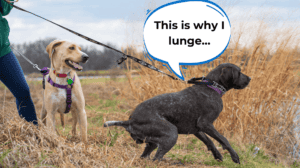
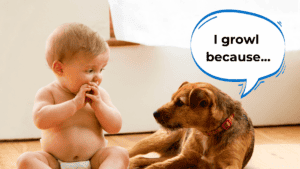

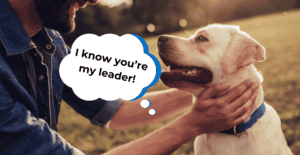

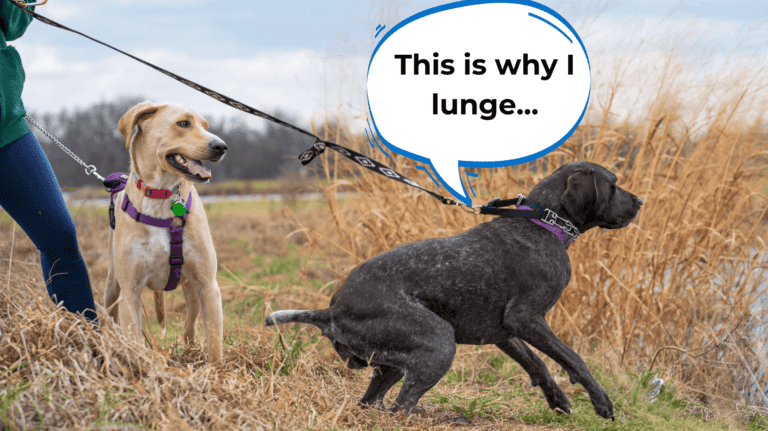

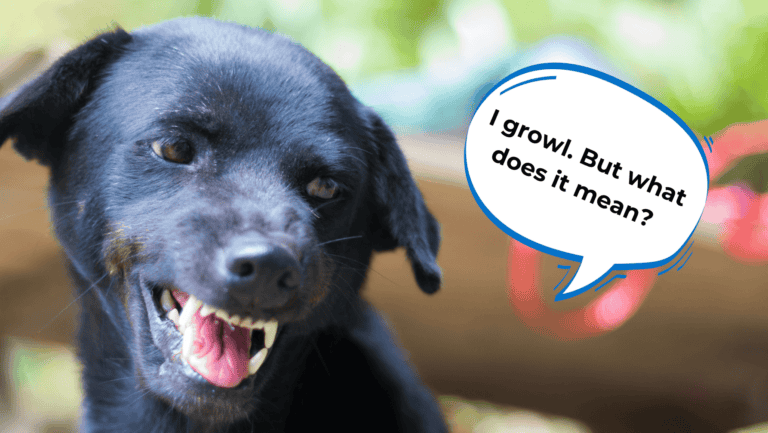

2 Responses
I think that doggies are the sweetest creatures ever! I love them so much. But yeah as we all know, a well-disciplined dog is more cute. Idk, you just don’t get angry at the dog that much. I think that teaching them discipline is very important, dogs start to respect you as their owner. They should respect you, so you gotta be in charge. There are a lot of ways to discipline a dog, but do that thoroughly, because dogs also have their psychology. Do not do too much, but do not let them take a leadership neither. They are just like kids! It was a difficult path with disciplining my dog, but it was worth it.
Hi Tony,
Helping owners raise happy & well behaved dogs is the main aim behind what I do. Breaking down the main barrier that prevents this, misunderstanding what our dogs are trying to communicate & why, is a vital part of this process. It’s not necessary to use force or intimidation when overcoming behavioural issues, it’s all about convincing our dogs that they can trust us to look after them…..but this needs to be done in a way that is relevant to them. My Dog Calming code is essentially a crash-course in Canine Communication….and language that all dog owners should know! All the Best, Doggy Dan